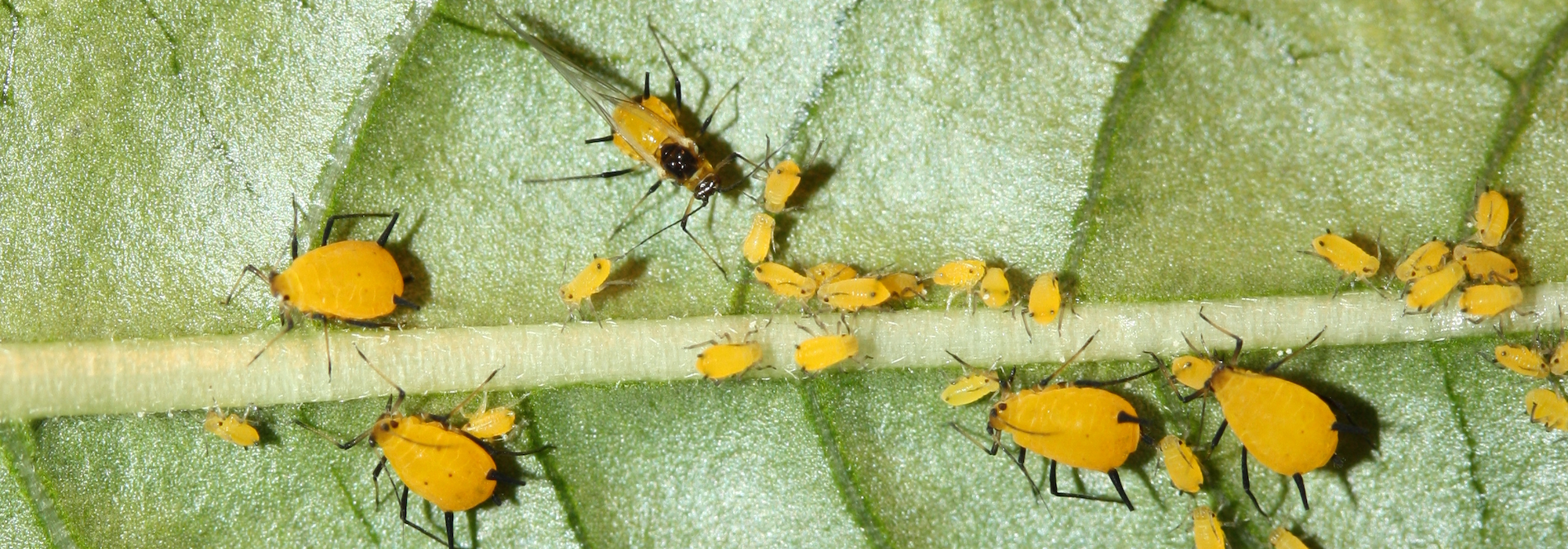Nancy A. Moran
Research
CURRENT RESEARCH
PAST RESEARCH
- Elucidating the molecular bases of species interactions in host-associated bacterial communities
- Role of Gut Microbiota in Honey Bee Health
- Coevolutionary dynamics in an obligate insect symbiosis
- Colonization by a Co-evolved Gut Community
- Dual Obligate Intracellular Symbionts
- Control of Bee Behavior by Stably Engineered Gut Microbial Communities
- Dimensions of Biodiversity: the Gut Microbiota of Bees
- Environmental Genomics of Symbionts in Pea Aphids
- Genomics of Bacterial Symbionts of Plant Sap-Feeding Insects
- Biocomplexity in the Environment
- Bacterial Endosymbiont Diversity in Drosophilla
- Biocomplexity of Symbiotic Bacteria
- Genomic Evolution of Buchnera
- Evolutionary Dynamics of Endosymbiont-Borne Adaption on Aphids
- Molecular Phylogenetics of Sternorrhyncha
- Phylogenetics of Aphids
- Genetically Variable Complex Life Cycles in Heterogeneous Environments
PAST Research Projects

Phylogenetics of Aphids and Their Intracellular Associates and Implications for the Evolutionary History of the Endosymbiosis
(PI is Nancy Moran)
Many animal and plant species contain bacteria, called endosymbionts, that inhabit specialized cells of their hosts. These associations are widespread in insects that feed on plant sap, including aphids and their evolutionary relatives. The insects cannot grow or reproduce without their endosymbionts, and specialized mechanisms ensure that offspring are infected at birth. Dr. Nancy Moran of the University of Arizona, collaborating with Dr. Paul Baumann at the University of California-Davis, is working to reconstruct the evolutionary history of the endosymbioses of aphids and related insects, in order to determine how the bacteria and insects have diversified in association with one another. They are analyzing nucleotide sequence data from ribosomal DNA from both bacteria and their hosts in order to infer phylogenetic trees of the species, by measuring mutational differences among the taxa. Analysis of the correspondence, or lack thereof, of these phylogenetic trees will permit a determination of whether the bacteria have diversified in parallel with hosts or whether unrelated groups of bacteria have frequently invaded new insect hosts through time. The data will also allow an estimate of the ages of the associations and of rates of molecular change. The findings should illuminate the nature of endosymbiotic associations in general and will aid in understanding the evolution of this important group of insects.